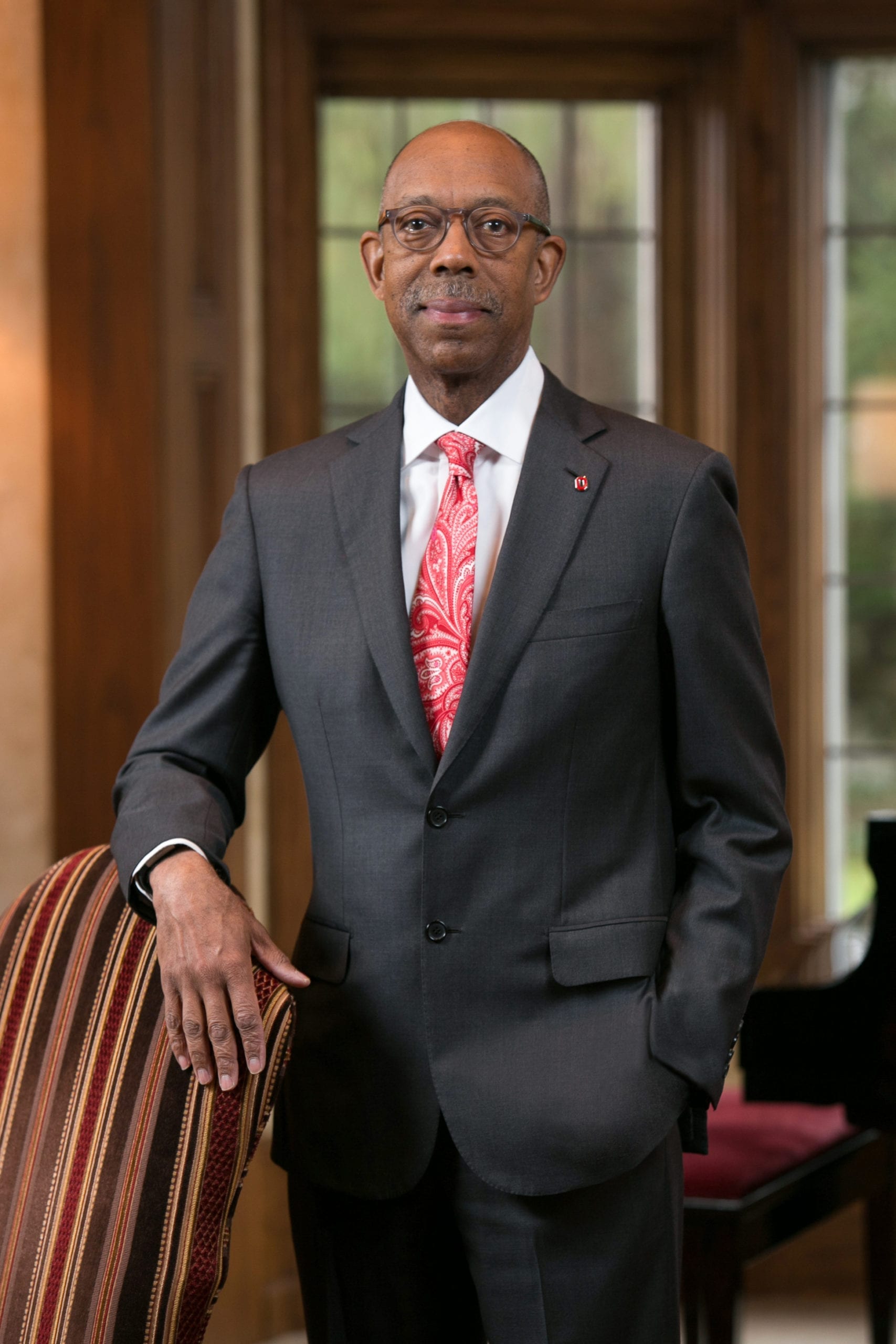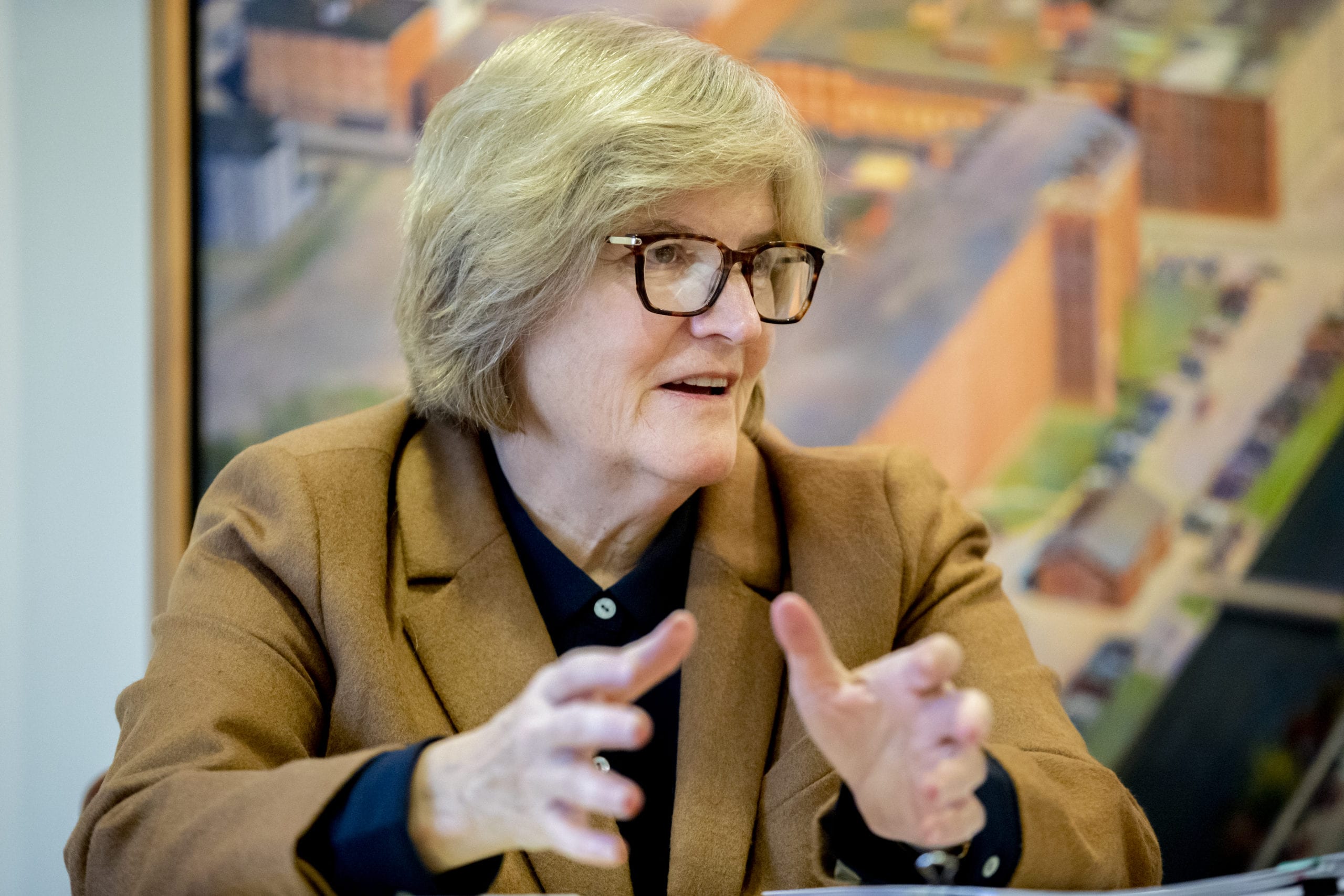With over 68,000 students, The Ohio State University is one of the largest institutions in the country. When asked if it is more challenging to preside over such a big school, its president, Dr. Michael Drake, likened it to swimming in an ocean as opposed to a pool. “There’s a lot more underneath, but you still have to take good strokes and breathe.”
Drake, who is a physician, came to the Columbus campus from the University of California, Irvine and brought with him many of the successes he experienced there with the hope that excellence can be achieved at any scale. Progress has certainly been made in the nearly six years Drake has been president, particularly in the areas he most hoped to influence.
Soon to transition from his current role, Drake has focused on greater access to an affordable Ohio State education, having committed $200 million in aid and tuition strategies for middle- and lower-income students. He is proud of the fact that the year he leaves features the most diverse and academically talented class in Ohio State’s history. In improving access, Drake uses value as the metric, noting that an affordable education is not valuable if it is only marginal.
On the excellence score, Ohio State under Drake has many milestones to tout, including record highs in graduation rates, retention rates, and donor support; as well as increases in research grants and faculty awards.
Drake has become a national figure in higher education leadership, having chaired some of the most prestigious and influential associations in the country. As Ohio State’s president, he has used these networks to work through many of the tough issues facing higher ed today – including the emotional and behavioral health of college students, an area that has become an ongoing priority and a challenge for schools throughout the country.
We spoke by phone in early March.
Mary Christie Quarterly: Did you have a vision for what you wanted to have happen at Ohio State? Do you feel like you’ve accomplished what you came here to do?
Michael Drake: I had a vision of what might be accomplished here, and it was based on things we had done in a high-quality way at the University of California, Irvine. My interest was whether we could see similar progress at an institution as large and impactful as The Ohio State University.
I was very much interested in access, affordability, and excellence. By that, I mean making the university more broadly and easily accessible to a wide variety of students who were outstanding in a wide variety of ways – and then seeing if we could do it more affordably. I, like many of us, am concerned about the high cost of higher education. We wondered if we could make the university experience more affordable to more people. One of the ways we would achieve that is by blunting the rise in debt that college students are graduating with and seeing what we could do to contain the cost to make it a more affordable institution.
At the same time, I was focused on making meaningful progress on a variety of measures of excellence that all of us in higher education use to help determine the quality of variance that impacts our tuition. These measures include excellence in research, in patient care and patient experience, in student outcomes, community relations – looking at these areas and asking if we can be better. And then the goal would be to be better in as many areas as were practical and be the exemplars of best practices in ways that would help engage, inspire and empower others to do those things as well.
MCQ: What has been the result?
MD: We’re thrilled with the way the numbers have gone. We have the most diverse incoming class we’ve ever had and the best academically prepared class we’ve ever had. Our retention levels are at an all-time high, and our graduation rates are substantially higher than they’ve ever been.
When you look at debt, more students are graduating debt-free than several years ago, and those who have debt have less than they had a few years ago. So that’s better access, better affordability, and better excellence. Those are the kinds of measures we want to see moving in the right direction.
MCQ: What has been your experiences here in terms of student emotional and behavioral health?
MD: There has been a change nationally in that we’re seeing many more students arriving here who have an established history with a mental health provider. They come to us with experiences they expect us to replicate, and we do our best to meet those challenges. Our approach really has been to do two things: one is to step up to levels that help meet the actual demand, and the other is to think of novel approaches of supporting student mental health in ways that go beyond therapy to a broader menu of interventions.
We just developed an app that helps students navigate the range of opportunities that the university offers. In some cases, the app itself is interactive and can address issues. In other cases, it’s a road map to services that are available. It’s been highly utilized.
MCQ: Do you think challenges like this are harder in such a large institution? Does the role of the president change?
MD: There’s no doubt that the size of the enterprise impacts the distance that I have between a decision and its effect. But to me, it’s pretty much the same. Sometimes I can’t touch people directly, or individually, like I once could, which means you have to communicate things in a way that makes sense. We try to start with good ideas and good policy, and then we think a lot about how to communicate that.
MCQ: You’ve had many leadership roles in higher education associations. How are these efforts beneficial to the kinds of issues you deal with on campus?
MD: I’ve chaired the APLU (Association of Public and Land-grant Universities), the AAU (Association of American Universities), the Association of Academic Health Centers and others, so I’ve worked a lot of hours with my colleagues on a lot of issues. I would say it is very gratifying and humbling, and I hope effective, to work with president and chancellor peers on the big issues that we face.
Two of the most important aspects of that participation are that everyone has unique experiences they can bring to the table, and there are many overlapping concerns and opportunities we can address together.
MCQ: Will you continue working in some capacity even after you retire as president?
MD: Sure. I’m still teaching, and I’ll be doing more writing as I did early on in my career. I still work with higher education associations, and I am on a few boards. I am a member of the board of the Rock & Roll Hall of Fame, and I’m a pretty active member. I have a few musical groups that I still play with. They’re all better than I am, I promise.
MCQ: Will you stay involved in issues around affordability and access for underserved communities and students that are non-traditional?
MD: Absolutely.




